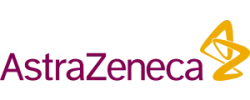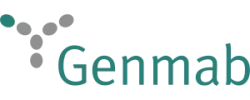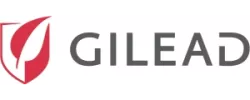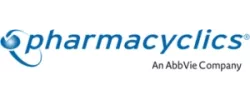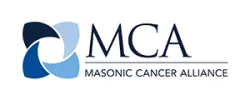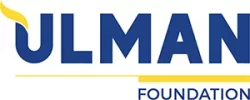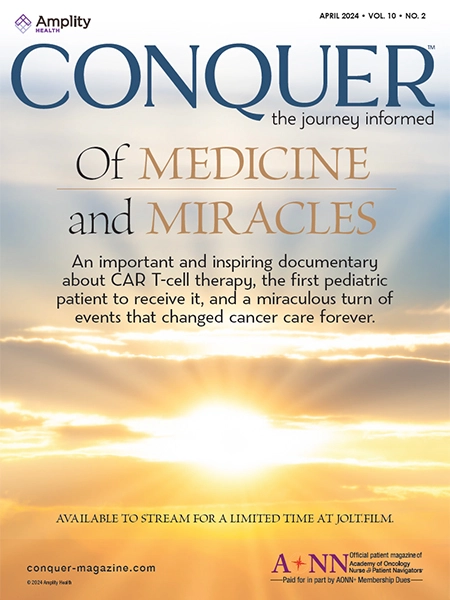That’s a wrap! We are pleased to share this final recap of the Academy of Oncology Nurse & Patient Navigators (AONN+) 2023 Midyear Conference highlights. These were just a few of the many outstanding presentations by expert thought leaders across the oncology space.
- AONN+ Website Relaunch Boasts New Layout, 9 New Navigation Tabs
- ACCC Launches New Financial Advocacy Services Guidelines
- Understanding Specialty Pharmacies and Prior Authorizations: The Importance of Standardization
AONN+ Website Relaunch Boasts New Layout, 9 New Navigation Tabs
AONN+ members announced the relaunch of the completely revamped AONN+ website at the 2023 AONN+ Midyear Conference in Orlando. Features of the newly designed platform were discussed at a celebratory lunch session (complete with pink flamingo stilts-walkers!), all designed with an emphasis on connecting, sharing knowledge, and staying updated within the oncology navigation community.
“We have heard your feedback through the years, and we’ve reorganized the entire website,” said Ruby Charles at the celebration lunch. “We have an all-new menu with 9 different categories to help you more intuitively find the tools and resources that you look for on AONN+ online.”
Through the first tab, “Conferences,” users can find information about and register for upcoming AONN+ conferences, as well as submit research abstracts for midyear and annual meetings. The “Committees” tab offers opportunities for leaders to join national committees (AONN+ has more than 10), through which they can share best practices, connect with like-minded colleagues, and set new trends/topics that are of utmost importance to each specific committee.
The “Tools and Resources” tab showcases AONN+ initiatives such as CATCH (Catching and Addressing Threats to Care and Health), BOLD (Building Oncology Leadership and Development), BRIDGE (Building Relationships in Delivering Genetic/Genomic Education), and CAPE (Cancer Advocacy and Patient Education), all of which provide useful resources for everyday practice. Navigators are encouraged to honor and celebrate their colleagues by submitting a “Catch” through the website (a navigation win where the navigator caught an issue and intervened to correct it). These are regularly published in the JONS journal, and the first “CATCH of the Year” Award will be presented at this year’s annual conference in San Antonio in November.
“We really want to celebrate the work that you guys do every day in helping to improve the lives of your patients and caregivers,” noted Jordan Henderson , Director of AONN+ Program Development.
The “Education” tab highlights the availability of toolkits, resource guides, and webinars, while “Local Navigator Networks” allows navigators to browse national, international, and virtual navigator networks through an interactive map. The website also offers helpful information for users hoping to start their own local navigator network.
The “Navigating A to Z” tab highlights AONN+’s aim of providing evidence-based practice resources, including research papers and disease-specific information. Through this tab, navigators are able to dig into useful resources according to tumor type (eg, breast, hematologic, lung cancers, etc).
The “Discussion Boards” tab allows users to engage in conversations with professionals across the country and beyond. Currently, the discussion boards focus on the following topics: breast cancer, lung cancer, clinical trials, the BOLD initiative, and general discussion. AONN+ members are encouraged to visit the discussion boards, join these conversations, ask questions, and engage with their colleagues across the country and around the world.
“The discussion boards were developed so that AONN+ members can connect beyond midyear and annual conferences,” said Ms Charles. “We want you to stay connected throughout the year, so please create topics, share resources and challenges, and share your wins for the day.”
Ms Charles also pointed out the website’s access levels, particularly the new subscriber level, which allows colleagues to engage in discussions and comment on blogs without full membership access.
The “Digital Library” tab is a centralized location for videos, Facebook Live sessions, blogs, podcasts, and the newly introduced AONN+ YouTube channel. Lastly, the “News and Events” tab allows users to access newsletters, columns, and updates on local and national happenings.
Website visitors can also access Conquer and JONS through the platform, and abstract submission for publication in these magazines is always encouraged (submission guidelines are also on the site).
“There are some great bits of wisdom—some from years back—on our website,” said Sharon Gentry , AONN+ Program Director. “So please take some time to explore them.”
ACCC Launches New Financial Advocacy Services Guidelines
Financial advocacy services play a crucial role in ensuring that patients with cancer can access affordable and high-quality care without the burden of financial toxicity. However, the field of financial advocacy has been plagued by a lack of standardization, varied job titles, and inconsistent services offered across different cancer centers, according to Rifeta Kajdic Hodzic , Program Manager at the Association of Community Cancer Centers (ACCC). In recognition of these challenges, the ACCC Financial Advocacy Services Guidelines have recently undergone a comprehensive revamp, aimed at advancing the field of financial advocacy and helping patients gain access to affordable and high-quality care.
Upon receiving a cancer diagnosis, many patients worry about the financial implications of their treatment. “After the initial shock, the question people tend to ask themselves is, ‘If I survive this, how do I pay for this?’” she said. “We, as financial advocates, are in a position to help patients have a safer and more successful cancer journey by taking away those financial stressors.”
At the 2023 AONN+ Midyear Conference in Orlando, Ms Hodzic, along with Lori Schneider , Oncology Operations Manager at Green Bay Oncology, discussed the process of redeveloping the guidelines.
“Before I joined ACCC, I started my career as a patient financial advocate at St. Luke’s Cancer Institute in Boise, Idaho,” Ms Hodzic recalled. “If I could travel back in time 10 years and tell my scared younger self that one day we’d get to a place where we have consensus-based guidelines, to tell her not to give up, that would be a privilege.”
The Current Landscape
Effective financial advocacy proactively integrates financial health into patient care, and requires consistent collaboration between various stakeholders, including clinicians, operational staff, and patients themselves.
But in the current landscape of financial navigation, a lack of consensus exists regarding job titles and responsibilities. Financial counselors, financial navigators, and financial advocates all perform similar tasks, but without a standardized framework for their roles and responsibilities. Additionally, the educational backgrounds and knowledge levels of financial advocacy team members vary widely, resulting in inconsistencies in the services provided.
Variability in the services provided by different cancer centers poses another challenge: some may only focus on insurance optimization, while others offer a broader range of assistance, including help with social security disability and FMLA paperwork. In addition, the level of financial hardship experienced by patients is influenced by national, local, and institutional policies.
To address these challenges, the standardization of services is imperative. Clear metrics and outcomes are needed to measure the impact of financial advocacy efforts accurately, and demonstrating the return on investment is essential to make a compelling case for the necessity of financial advocacy services in oncology. But the field has evolved significantly in recent years, at the same time seeing a high rate of turnover, adding to the challenges of standardization.
“So there’s a need for all of us to pass on our training and experience—things that we’ve learned from trial and error—to new financial advocates coming on board,” Ms Hodzic said.
Creating the Guidelines
According to Ms Hodzic, establishing the new ACCC Financial Advocacy Services Guidelines was achieved through the work of a multidisciplinary expert task force. Through an extensive literature review, as well as multiple rounds of questionnaires and consensus-building exercises, the task force identified guiding principles that should be followed to provide effective financial advocacy services. The guidelines were shaped by these “North Stars” of patient-centeredness, equity, rigor, engagement, value, and feasibility.
The Financial Advocacy Services Guidelines support:
- Health Equity: Recognizing patients’ right to access affordable care
- Policy Efforts: Advocating to address systemic barriers to care
- Standardization: Establishing consistent services and better evaluating outcomes
- Sustainability: Demonstrating impact and return on investment
- Career Development: Professionalizing the field and creating a path to certification
- Research: Providing a common framework for multicenter studies
The guidelines are divided into 3 domains: Financial Advocacy Services and Functions, Program Management Functions, and Partner Engagement Functions. The first domain encompasses essential aspects such as patient education and communication, benefits verification, financial distress screening, and financial assistance. Program Management Functions emphasize the need for awareness of financial distress throughout the multidisciplinary team, staff training, and effective infrastructure, while Partner Engagement Functions focus on the importance of staying informed about evolving requirements and building relationships with payers, pharmacies, and manufacturers.
According to Ms Schneider, before implementing the new guidelines in your own program, it’s important to evaluate the services you currently provide (and how often they’re provided), making sure to identify any gaps. Next, set goals for future implementation and set a realistic timeframe to obtain those goals. ACCC offers various tools, trainings, and resources to aid programs with implementation, and will be launching a Financial Advocacy Services Assessment Tool this year.
“We need all stakeholders to commit to action to help disseminate our program, and to expand the health care system’s capacity to deliver financial advocacy services and address systemic barriers to affordable care,” she said. “It really does take a village to help move this forward.”
Understanding Specialty Pharmacies and Prior Authorizations: The Importance of Standardization
Specialty pharmacies and prior authorizations are unavoidable aspects of oncology care that often pose challenges for both patients and providers. However, standardization plays a crucial role in simplifying these complex processes, allowing for improved efficiency and optimal patient care, according to Jason Zimmerman, RN, OCN. Standardization also facilitates seamless transitions between healthcare professionals, ensuring continuity of care even when someone is unable to perform their duties.
“Prior authorizations make you want to pull your hair out sometimes, but when it comes to dealing with complex procedures, the more you can standardize them, the more comfortable and efficient you’ll become,” he said at the 2023 AONN+ Midyear Conference in Orlando.
What Is Specialty Pharmacy?
Specialty pharmacies play a vital role in managing rare, chronic, and complex medical conditions. These pharmacies are accredited and designed to handle medications that require special care, personalized education, adherence monitoring, and follow-up. Unlike traditional retail pharmacies, specialty pharmacies provide comprehensive support and ensure patients receive the attention and care they need.
Financial barriers often accompany specialty pharmacy medications due to their high costs and limited distribution networks. “Once you start talking high-cost medications, there’s usually a high out-of-pocket cost, which then creates financial toxicity,” he noted. To address this issue, it’s crucial to ensure that financial assistance options are explored and patients are aware of the resources available to them.
Overcoming Barriers and Streamlining Prior Authorizations
The sheer complexity of the healthcare system poses a number of barriers to the prior authorization process. Currently, there are no exhaustive drug lists or a specific set of criteria outlining which medications are considered specialty medications, and each insurer has different rules and regulations regarding prior authorizations, formulary restrictions, designated specialty pharmacies, etc. Paperwork required by insurance providers can also be burdensome, and when not completed correctly, can delay treatment (sometimes by up to 10 days).
Spending significant time attempting to contact and communicate with insurers, pharmaceutical companies, and external pharmacies only further complicates this already tedious process. While these processes can be frustrating and time-consuming, it’s important to remember that effective communication, attention to detail, and utilization of available resources can help to mitigate these challenges.
According to Mr Zimmerman, obtaining necessary clinical information about a patient plays a vital role in streamlining prior authorizations and navigating these processes efficiently. “Talk to the doctor, or go in the medical record and find it yourself,” he advised. “You need to have clinical information to fill out these forms.”
Investing time upfront is key to streamlining the workflow. Ensuring that a dedicated professional with clinical experience handles these authorizations is crucial. “Clinical experience is invaluable when you’re trying to take care of patients in the best way that you can,” he said. It’s also beneficial to schedule patient appointments in a manner that allows ample time for prior authorization tasks, reducing the pressure of time constraints.
One valuable resource that simplifies the prior authorization process is CoverMyMeds, which provides an intuitive platform for submitting authorization requests. By simply asking users to input patient and medication information, select the appropriate form, and attach any necessary medical records, this platform minimizes redundant paperwork and optimizes communication with insurance companies. “Find an electronic prior authorization process that you’re comfortable with,” he advised. “But in my opinion, CoverMyMeds seems to have the best process and availability for prior authorizations, and it’s the easiest one to work with.”
“In-House” Specialty Pharmacy: The “Easy Way”
Or, you can do it the “easy way,” said Mr Zimmerman. If not already in place, developing an integrated, in-house specialty pharmacy can foster better collaboration, efficiency, and communication.
“Because they’re in-network, they’ll have access to your EMR, which limits back-and-forth communication,” he noted. “They can run the test claims so you have an idea of the what the cost will be and whether or not you need to involve a financial navigator, and they can also tell you exactly where it needs to be filled. Compared to working with someone from a completely different company, sometimes people will go that extra mile when you’re on the same team.”
This improved collaboration and communication can equate to wins for all involved stakeholders. Navigators win back more time to spend on navigating patients, and the health system wins because they’re increasing their revenue. But most importantly, patients win by receiving timely access to necessary medications, minimizing their financial burdens and receiving quality, comprehensive support throughout their healthcare journey.

